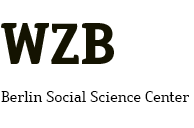PREVALÊNCIA DO TRANSTORNO DE ESTRESSE PÓS-TRAUMÁTICO (TEPT) DURANTE A PANDEMIA
Resumo
Objetivo: Verificar a prevalência do TEPT na população geral durante o período de pandemia. Métodos: estudo quantitativo e exploratório, realizado através da plataforma Google Forms, mediante a aplicação do instrumento “Pos-Traumatic Stress Disorder Checklist - Civilian Version” (PCL-C) na população geral, no período de 13/05 a 13/07 de 2021. Resultados: A amostra foi composta por 425 participantes. Observou-se que 26,12% dos participantes preencheram critérios para o diagnóstico de TEPT. Destacou-se maior predominância de sintomas pertencentes ao critério D (61,3%) da escala PCL-C. Verificou-se ainda que, 51,53% dos participantes identificaram a pandemia como fator intensificador dos sintomas pós-traumáticos. Conclusão: O estudo mostrou que a prevalência de TEPT obtida na população amostral durante o atual cenário de pandemia é copiosamente alta, quando comparada a prevalência do transtorno descrita na literatura. Houve uma identificação por parte dos participantes de que a pandemia é um fator indutor e/ou intensificador dos sintomas pós-traumáticos, atestando a importância da promoção de cuidados relacionados a saúde mental da população.
PREVALENCE OF POST-TRAUMATIC STRESS DISORDER (PTSD) DURING THE PANDEMIC PERIOD
Objective: To verify the prevalence of PTSD in the general population during the pandemic period. Methods: This is a quantitative and exploratory study, conducted through the Google Forms platform, by applying the instrument "Pos-Traumatic Stress Disorder Checklist - Civilian Version” (PCL-C) in the general population, in the period from may 13 to july 13, 2021. Results: The sample was composed by 425 participants. It was observed that 26.12% of the participants met the criteria for PTSD diagnosis. A greater predominance of symptoms belonging to criterion D (61.3%) of the PCL-C scale was noticed. It was also verified that 51.53% of the participants identified the pandemic as a factor intensifying the post-traumatic symptoms. Conclusion: The study showed that the prevalence of PTSD obtained in the sample population during the current pandemic scenario is copiously high, when compared to the prevalence of the disorder described in the literature. There was an identification by the participants that the pandemic is an inducing and/or intensifying factor of post-traumatic symptoms, attesting to the importance of promoting care related to the mental health of the population.
Palavras-chave
Texto completo:
PDFApontamentos
- Não há apontamentos.
Direitos autorais 2023 Revista UNILUS Ensino e Pesquisa - RUEP
ISSN (impresso): 1807-8850
ISSN (eletrônico): 2318-2083
Periodicidade: Trimestral
Primeiro trimestre, jan./mar., submissões até 31 de março, publicação da edição até 15 de agosto.
Segundo trimestre, abr./jun., submissões até 30 de junho, publicação da edição até 15 de outubro.
Terceiro trimestre, jul./set., submissões até 30 de setembro, publicação da edição até 15 de janeiro.
Quarto trimestre, out./dez., submissões até 31 de dezembro, publicação da edição até 15 de abril.

Este obra está licenciado com uma Licença Creative Commons Atribuição-NãoComercial-SemDerivações 4.0 Internacional.
Indexadores
Estatística de Acesso à RUEP
Monitorado desde 01 de dezembro de 2025.
Monitorado desde 22 de novembro de 2016.













